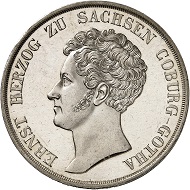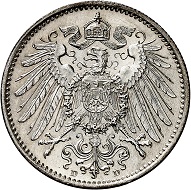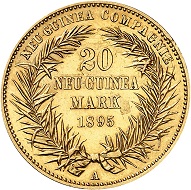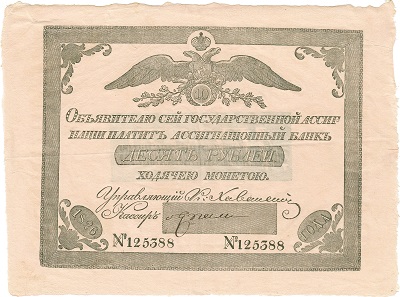12-11-2018 – 13-11-2018
Auction 75
Extensive Collection of Ancient Coins at Heidelberger Münzhandlung
3,664 lots of coins from antiquity up to the present, originating from all five continents, with a focus on Roman, German, and French coins will be offered at the upcoming Heidelberger Münzhandlung auction. For those who are interested in perfect conditions, this catalog will hit home. In addition, a collection of early banknotes including some interesting rarities will be sold at auction 75.
No. 8. Celtic coins. Helvetii. Electrum stater. Very rare. Very fine. Estimate: 2,400 euros.
Antiquity
19 Celtic coins will start off the auction. Part of this selection is a very fine Helvetian electrum stater and a regenbogenschüsselchen of the Vindelici who settled in the region that today is the city of Augsburg at the time of the reign of Caesar.
No. 43. Agathocles, Tyrant of Syracuse 317-289. Electrum-hemidrachm or decadrachm. Rare. Very fine. Estimate: 3,000 euros.
Those who love Greek coins should carefully study catalog 75 as it contains numerous rarities. Whether it may be rare fractions like the litra of Aitna-Catania, or historically fascinating bronze coins like the Macedonian coin of Ptolemy Keraunos, it is worth taking a close look in order to find all of the interesting pieces hidden within more than 230 lots.
An electrum half-stater of Agathocles of Syracuse imitating the gold coins of Philipp of Macedonia deserves being highlighted. And that is not the only high-level rarity: An interesting early stater from Cyzicus depicting a griffin sitting on a tuna fish is estimated at 5,500 euros.
No. 793. Decentius Caesar, 350-353. Solidus, Rome. Extremely rare. Including expertise and French export certificate. Bent, very fine. Estimate: 17,500 euros.
Electrum is followed by gold. The abundance of rare aurei and solidi is without equal. Depicted here is an extremely fine aureus of Tiberius representing the large number of gold coins offered in this auction which experts surely will appreciate. Other highlights include an aureus of Hadrian featuring Heracles’ temple on the reverse, an extremely fine+ aureus of Elagabal showing a liberalitas scene on the reverse as well as an allegedly unpublished solidus of Decentius.
Those who collect the rich and varied coinage of emperor Hadrian can look forward to a comprehensive series containing coins of all three types of metals. It includes numerous pieces with historically relevant reverse images with some examples of the popular travel series.
Experts will appreciate the variety of rare coins of exceptional condition offered here – some of which are found not only within the high-range price segment. Let us use an antoninianus of Gallienus from Antiochia struck onto an unusually wide planchet as an example. The piece is estimated at 50 euros and almost appears medallion-like.
Whether it may be unpublished rarities or common pieces of exceptional grade, whether it may be rare emperors or rare empresses, the 550 lots of Roman coins – including an extensive series of provincial coins and medals – will leave nothing to be desired.
No. 865. France. John II the Good, 1350-1364. Mouton d’or, n.d. Extremely fine to FDC. Estimate: 2,500
Specialized France collection
Auction 75 includes a comprehensive France collection of almost 200 lots. The time span covered here ranges from Philip IV (1285-1314) up to the present.
The large gold coins, which were struck at the time of the transition from the late Middle Ages to the early modern period, are particularly astonishing.
No. 1043. France. Fifth Republic. 100 francs 1991 “René Descartes”. Piedfort in platinum. Mintage of 5 specimens! In the original case including certificate. Estimate: 5,000 euros.
The later French kings, the time of the French Republic, Napoleon, and the 19th century are also very well represented.
A special focus concentrates on the coins of the Fifth Republic, i.e. the time after 1959. One will encounter a variety of essays or commemorative coins struck at a very low mintage, for example a 100 francs piedfort in platinum minted in 1991 commemorating the philosopher Descartes. Only 5 pieces of this coin were made.
No. 1121. Russia. Elisabeth I, 1741-1761. 10 rubles 1758, Moscow. Extremely rare. Very fine. Estimate: 22,500 euros.
Numerous rarities can be found in the world coins section. One representative example is this very fine gold 10 rubles piece of tsarina Elisabeth struck in Moscow in 1758.
No. 1249. Japan. 50 sen meiji year 7 = 1874. Extremely fine. NGC Proof Details, Mount removed. Impaired proof. Estimate: 20,000 euros.
Just like previous ones, catalog 75 also contains a small series of Japanese and Chinese coins including two sycees as well as countless interesting modern coins and medals such as a much sought-after Sino-German Friendship Panda minted on the occasion of the 1993 coin convention in Munich.
No. 1241. China. Silvered bronze medal 1896 celebrating the visit of Li Hung Chang in Hamburg. Extremely fine. Estimate: 3,000 euros.
A medal made in 1896 reminds us of a part of German-Chinese history. It is dedicated to the visit of one of the most important Chinese politicians of the 19th century in Hamburg. Li Hung Chang had taken over responsibility after China’s devastating defeat in the Sino-Japanese War of 1894/5 and had thus lost the office of governor of the country’s most important province. He nevertheless remained one of the most important politicians of the country and represented his government’s interest during an official journey to Europe and the United States in 1896. After attending the coronation of the Russian tsar, where important agreements were made regarding the Trans-Siberian Railway, Li Hung Chang continued on his journey to Germany. The fact that he decided to visit Bismarck, who had been deprived of power a few years prior, and not the German emperor was a political move that evoked strong reactions in the German press.
No. 1798. Palatine-Zweibrücken-Veldenz. Johann I, 1569-1604. Taler n.d., Zweibrücken. Very rare. Extremely fine. Estimate: 10,000 euros.
Germany
The numismatic journey of this auction takes us from China to Germany which naturally is the focus of this Heidelberger Münzhandlung auction. More than 900 lots are offered here. Included here are a large number of interesting gold coins as well as an extensive Brunswick batch with numerous yield coins, an interesting Frankfurt (Main) and Saxony series, and 300 lots of coins and medals from Prussia including many well sought-after rarities.
No. 1739. Löwenstein-Wertheim-Virneburg. Johann Ludwig Vollrath, 1730-1790. Ducat 1771, Wertheim. Extremely rare. Extremely fine+. Estimate: 14,000 euros.
The rarest of the great number of German gold coins offered is a ducat of Löwenstein-Wertheim-Virneburg struck in Wertheim in 1771. It is a representative example of the numerous river gold ducats, multiple ducats, and other rare gold coins sold in this auction.
Those who collect yield coins should study this catalog carefully. You won’t just find them in the Brunswick section but also in numerous other ones. For example, in the Kingdom of Hanover section, which of course emerged from the lines of Brunswick. This specimen is a yield convention taler struck from Harz silver in 1830.
Those who love beautiful images of towns and cities on coins surely already own a taler of Frankfurt. Anyone’s collection would complement a medal minted celebrating the homage of Carl Theodor of Dalberg which depicts an unusual perspective of Frankfurt. Dalberg had been forced to give up the office of archbishop of Mainz when Mainz passed to France. As he was a former chancellor of the Holy Roman Empire, subordinate only to the emperor, he could not be pushed aside like any other bishop or abbot. He was the only clerical ruler who was compensated with territorial sovereignty.
No. 1802. Prussia. Johann Georg, 1571-1598. Taler 1574, Berlin. Very rare. Very fine+. Estimate: 6,500 euros.
Specialized Brandenburg-Prussia collection
More than 300 lots of Brandenburg-Prussian coins cover a time period ranging from Johann Georg of Brandenburg to Wilhelm II. Expert collectors will find numerous extremely rare coins and medals as this taler of Johann Georg struck in 1574 depicting a beautiful portrait, an extremely rare taler of Johann Sigismund struck in Cologne in 1614, a spectacular double taler of the “Great Elector” Frederick William minted in Königsberg, as well as an extremely fine 1675 taler celebrating his victory at Fehrbellin.
No. 1893. Prussia. Frederick II, 1740-1786. Taler 1741, Berlin. Extremely fine. Estimate: 5,000 euros.
The reign of Frederick II is documented perfectly – especially on coins and medals of exceptional grade. Collectors should not only examine individual pieces but all of the lots. The fractions offered here, some of which are very rare and of outstanding condition, are combined in well thought-out lots.
No. 1952. Prussia. Frederick II, 1740-1786. “Levantetaler” 1767, Berlin or Magdeburg. Fine patina. Very fine to FDC. Estimate: 4,000.
Along with the homage ducat and rare talers stemming from the beginning of his reign, the auction also offers an abundance of rare gold coins, talers, and partial pieces of Frederick the Great from all of the mints that he had coins struck at, as well as trading coins like the bancotaler and the levantetaler.
No. 2240. Saxe-Coburg-Gotha. Ernst I, 1826-1844. Convention taler 1835, Gotha. Extremely rare in this condition. First strike, almost FDC. Estimate: 10,000 euros.
100 lots of this auction represent Saxony including all of its lines. The most spectacular piece may well be a convention taler of Ernst I of Saxe-Coburg-Gotha struck in 1835. He did not become famous due to his military achievements as a Prussian general, although he contributed fundamentally to the defeat of Napoleon. Instead, he is mostly known for his second-oldest son marrying Queen Victoria.
No. 2369. German Empire. 1 mark 1891 D. Extremely rare in this condition! Almost FDC. Estimate: 5,000 euros.
Coins of the German Empire
Heidelberger Münzhandlung also offers a wide-ranging run of coins of the German Empire – including anything from fractions to gold 20 marks pieces. Self-evidently, a large number of extremely rare coins and medals of exceptionally good grade are represented again. And one should not forget that Herbert Grün is known for a very strict interpretation of grade descriptions.
One fitting example is the almost FDC 1 mark piece 1891 D which is extremely rare in this condition.
No. 2994. German Empire. Saxony. 3 marks 1917 “Frederick the Wise”. The rarest silver coin of the German Empire. Proof. Estimate: 60,000 euros.
Those who do not yet own all of the rarities of the German Empire get another chance to acquire them here. Whether it may be Frederick the Great or the golden wedding anniversary of the Bavarian monarchs, a 2 marks piece struck in Hesse in 1877 or a first strike of a 2 marks Saxe-Coburg and Gotha coin celebrating the birth of the heir to the throne. Grade fetishists will rejoice over this catalog.
No. 3485. German New Guinea. 20 marks 1895 A. Rare in this condition. Extremely fine. Estimate: 45,000 euros.
That is also true for gold coins of the German Empire. A 20 marks piece struck in Berlin in 1885 on behalf of the Neu Guinea company serves as a representative example here. These coins are very rare in this extremely fine condition.
No. 3566. Russia. 10 rubles 1826. Slightly used. Estimate: 1,700 euros.
Let us finish off with a look at the extensive collection of paper money offered in this auction which primarily covers the early years of its production. Starting with a Chinese 1 kuan bill from the late 14th century, the collector focused on early banknotes, many of which still had to be filled out by hand.
Whether it may be the Swedish Riksbank, the Bank of England, the Giro di Venezia or the Monte di Pietà, most European countries from Spain to Russia are represented in this extremely interesting collection.
No. 3590. German Empire. Schleswig-Holstein. 2 reichstalers 24 schillings 1808, Altona. Fold in the middle, slightly used. Estimate: 500 euros.
And of course, numerous German bills that are very interesting in terms of the history of currency are offered, too. This example is from Schleswig-Holstein. The owner of this bill worth 2 talers 24 schillings received the Hauptcasse’s confirmation that he could use it to pay any official tax.
The catalog can be purchased at a price of 12.50 euros at Heidelberger Münzhandlung Herbert Grün, Gaisbergstr. 40, 69115 Heidelberg; phone: ++49 / 6221 / 65 2970; fax: ++49 / 6221 / 65 297-29; e-mail or on the Heidelberger Münzhandlung website.
The catalog is also available on Sixbid and Numisbids.







































